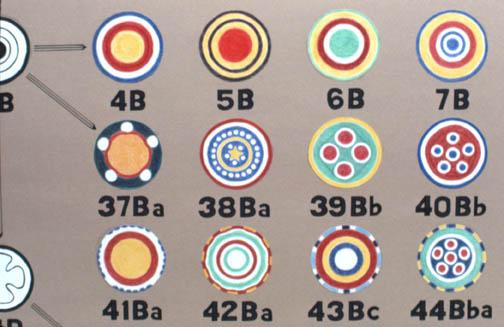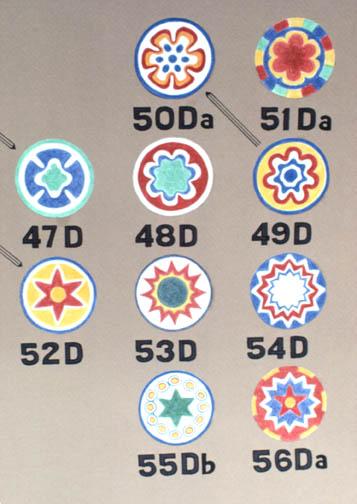This detail from ther Chart shows twelve examples of canes that are layered. The top row has typical bull's eye canes, whereas the second row shows internal composited elements (spots or dots), and the third row canes have external stripes.
I'm sometimes asked whether the starry center of number 38 is derived from molding. The answer is no. What was originally a circular center has become starry-looking because of the five elements packed onto the cane after a blue layer had been added. These white canes forced the central unit to become distorted, in a way that resembles intentional molding, but was probably unintentional. (Similar canes often do not have starry centers.) This displacement of the glass is practically the same thing that happens with molding. The difference lies in the actual steps and the intent of the canemaker.
Another thing viewers may wonder about here and elsewhere is why number 44 is in the lower line instead of the middle line with the other spotted canes. This is because the Chart builds in complexity. The final cane is a combination of internal compositing within a layered cane AND having external stripes. As such, it wouldn't belong in the previous line because stripes haven't been discussed yet.
Note also that when canes for millefiori work feature external stripes, these stripes can seem to be very thin and insignificant when the cane is viewed in cross section. However, when pieces are used to decorate beads, the slumping that occurs transfers what was the side of the cane to the top surface. Consequently, the stripes become much more visible and form a "rayed" effect in the resulting pattern. So, adding stripes to a cane is a simple but effective way of getting a dramatic effect for not much more work.
|



